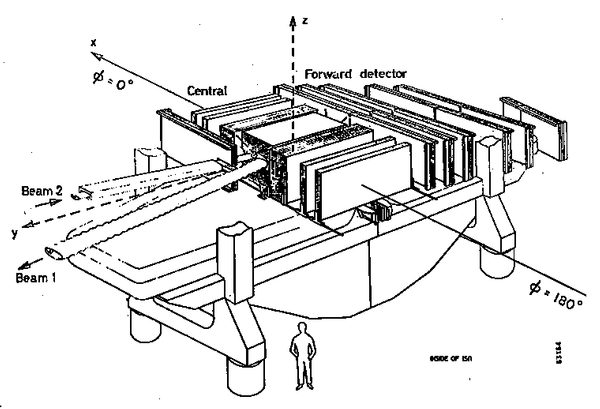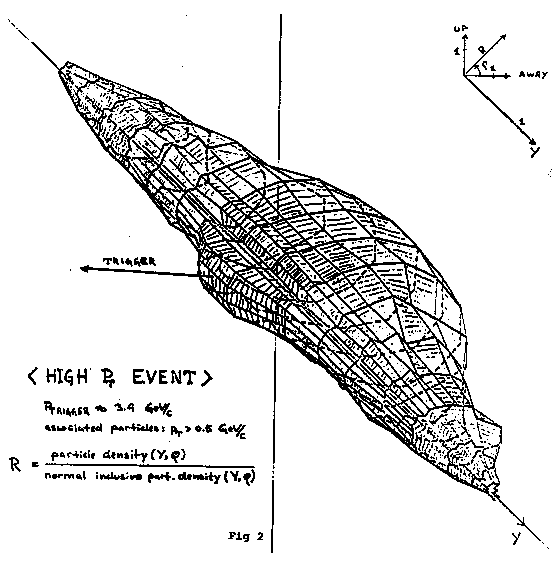
Figure 1

Figure 2
a) minimum bias where the only requirement was the presence of two tracks anywhere in the SFM and
b) R410-events,where one particle was recorded in the central hodoscopes.
So far the analysis of 25000 minimum bias events at s = 53 GeV has been completed. The pi+ pi- invariant mass distributions show evidence for dominant vector-meson production. In fact nearly all produced pions are the decay products of vector mesons, in particular rho and omega . We are now proceeding to get more detailed information on the energy and transverse momentum dependence of these resonances, and to learn more about e.g. K+ -production in events with identified kaons.
A single arm spectrometer was used to trigger on and analyse a charged particle in the momentum range 0.5 to 5.0 GeV/c, produced at 90 degrees in the cms of the colliding protons. The trigger particle was identified as a pion, kaon or proton over most of this momentum range. The SFM, with its large solid angle detector, was used to provide information about the rest of the event.
A total of 5.10+9 events were written on magnetic tape. About 20000 of these were selected for full processing, representing a computing cost of about 1 MSfr.
Figure 2 shows an enveloppe of the correlation function R as a function of the rapidity Y and the azimuth between a particle with measured Pt, larger than .5 GeV/c and a trigger particle with Pt larger than 3 GeV/c. A narrow bump is seen in the direction of the trigger while the enhancement in R on the opposite side has a much broader distribution. On an event to event basis, however, the correlation on the opposite side appears to be equally narrow as on the same side. One notices that there is a significant azimuthal assymetry in R even .in' the -forward directions.
The analysis on associated forward particles has been completed and the analysis on the momentum and charge flux carried by particles in the central region is just about finished. There is evidence for strong correlations among secondaries centered around the trigger particle with a transverse momentum of more than 3 GeV/c and similar clustering of particles on the opposite side of the trigger. Among the associated forward particles a transverse momentum recoil against the trigger is seen, largest at large Feynman x and apparently saturating with increasing trigger momentum.
The dependence of the correlations on the quantum numbers of the trigger particle is generally small, but interesting differences have been observed, e.g. in the charge distribution on the opposite side to the trigger when triggering on a K- or an anti-p as compared to other particles.


Figure 2